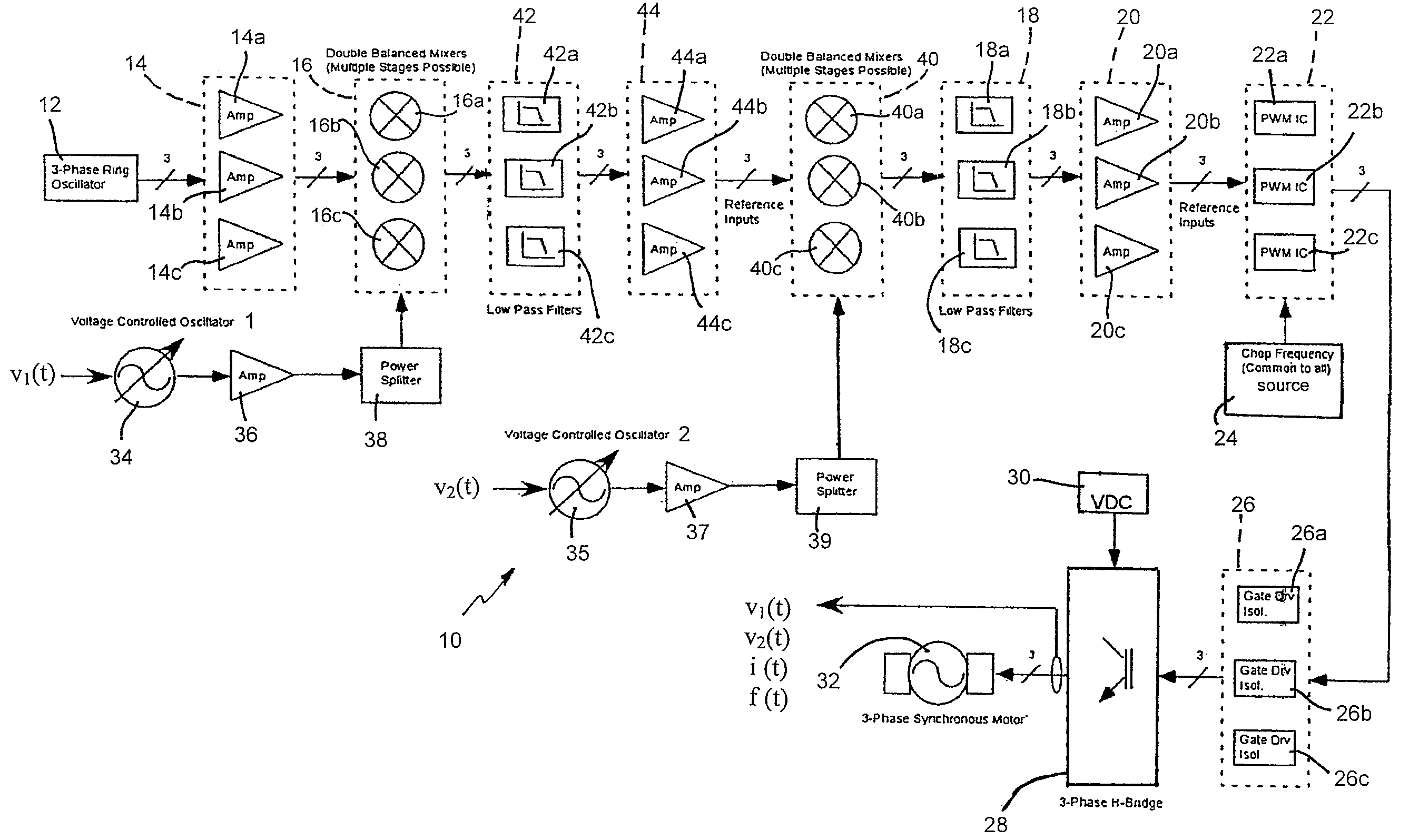Multi-phase, multi-frequency controller
a multi-frequency controller and multi-phase technology, applied in the direction of multiple dynamo-motor starters, motor/generator/converter stoppers, dynamo-electric converter control, etc., can solve the problem that the output frequency of current synchronous motors is limited by the load on these signal processors, and the frequency control range is expanded. problem, to achieve the effect of easy to achiev
- Summary
- Abstract
- Description
- Claims
- Application Information
AI Technical Summary
Benefits of technology
Problems solved by technology
Method used
Image
Examples
Embodiment Construction
[0009]Referring to FIG. 1, there is shown a combined schematic and block diagram of a multi-phase, multi-frequency controller 10 which is particularly adapted for use with an electric motor 32 in accordance with the present invention.
[0010]Multi-phase, multi-frequency controller 10 includes a 3-phase ring oscillator 12 which provides 3 separate output reference signals which are offset in phase from one another by 120°. While described primarily in terms of a 3-phase controller, the present invention is not limited to the use of 3-phase signals, but will operate equally as well with virtually any number of phase offset signals covering the full 360° of motor rotation. Each of the three output reference signals from the 3-phase ring oscillator 12 is provided to one of three respective amplifiers 14a, 14b and 14c in a first amplification stage 14. The amplified output signals from amplifiers 14a, 14b and 14c are each provided to a respective double balanced mixer 16a, 16b and 16c in a...
PUM
 Login to View More
Login to View More Abstract
Description
Claims
Application Information
 Login to View More
Login to View More - R&D
- Intellectual Property
- Life Sciences
- Materials
- Tech Scout
- Unparalleled Data Quality
- Higher Quality Content
- 60% Fewer Hallucinations
Browse by: Latest US Patents, China's latest patents, Technical Efficacy Thesaurus, Application Domain, Technology Topic, Popular Technical Reports.
© 2025 PatSnap. All rights reserved.Legal|Privacy policy|Modern Slavery Act Transparency Statement|Sitemap|About US| Contact US: help@patsnap.com



